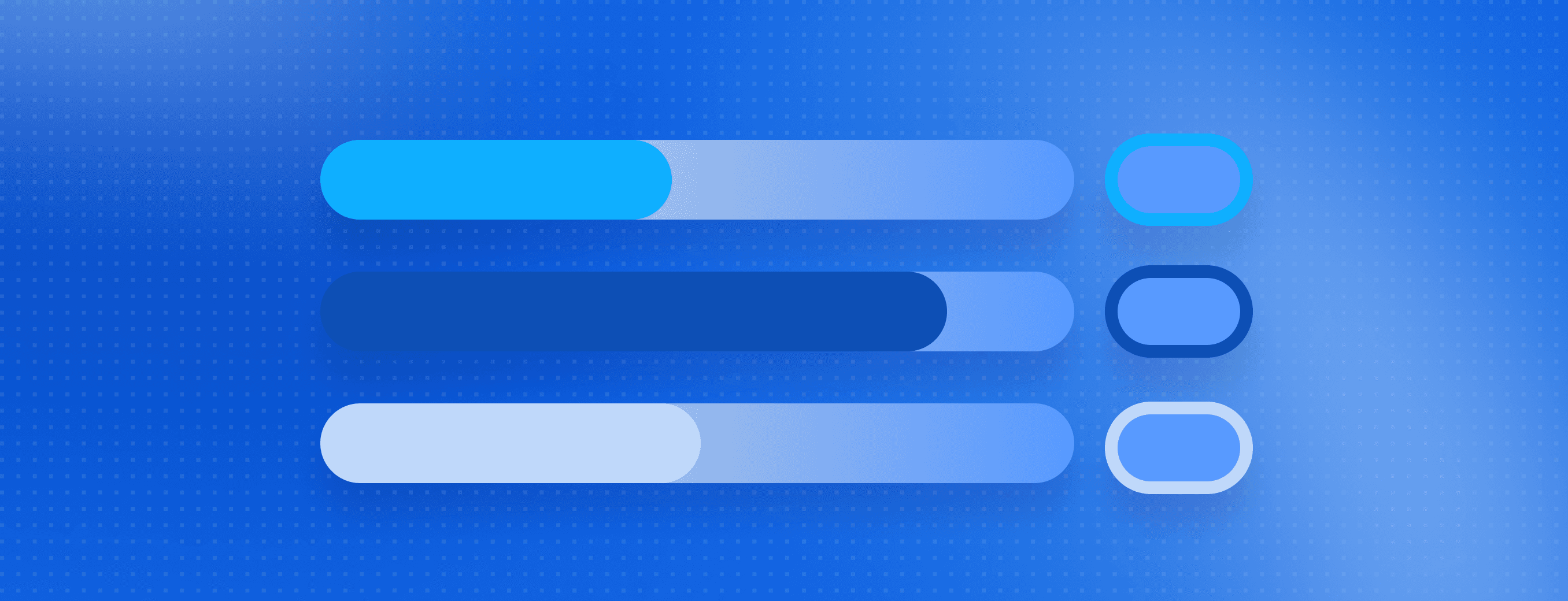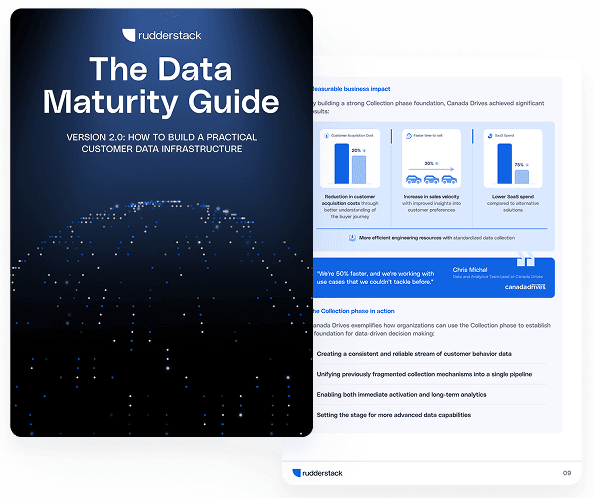What is a data pipeline? Best practices and use cases

Data pipelines are the backbone of the modern data stack. As organizations generate large volumes of information across digital channels, tools, and touchpoints, data pipelines automate the collection, transformation, and delivery of that data, ensuring it reaches the right systems in the right format at the right time. Whether you're analyzing customer behavior, powering dashboards, or fueling machine learning models, effective pipelines are what turn raw data into usable insights.
This article explores data pipelines in detail, discussing their function, components, benefits, and real-world applications. We'll examine how different pipeline architectures handle batch and streaming data, the technical considerations for implementation, and strategies for optimizing performance.
Main takeaways
- Data pipelines automate the flow of data from source to destination to support analytics, operations, and machine learning
- Pipeline architectures include batch, streaming, and hybrid models like Lambda to meet different data latency needs
- ETL, ELT, and reverse ETL are common pipeline patterns that support various transformation and delivery strategies
- Core pipeline stages include ingestion, transformation, validation, delivery, automation, monitoring, and documentation
- RudderStack helps teams build flexible, real-time pipelines that simplify ingestion and deliver clean data to downstream tools
What is a data pipeline?
Data pipelines are a series of processes that extract raw data from various sources, transform it into a desired format, and load it into target systems for storage or further use. They can include APIs, SQL databases, events, and files.
Transformation processes used in data pipelines may involve augmentation, enrichment, filtering, grouping, aggregating, or applying algorithms to ensure standardization. Once it's transformed, you can use the data for further analysis or feed it into different systems for operational applications.
Organizations typically employ multiple data pipelines to streamline data ingestion, automate repetitive tasks, and ensure that high-quality, consistent data is delivered across analytics, reporting, and business systems. Well-structured pipelines help reduce manual effort, minimize errors, and accelerate access to actionable insights.
This data pipeline diagram illustrates how data moves from sources through various transformations to downstream business systems.
📈 The data pipeline market is growing fast
The global data pipeline market is projected to grow from nearly $12.3 billion in 2025 to $43.6 billion by 2032, with a CAGR of nearly 20%. As adoption accelerates, investing in scalable, reliable pipelines is essential.
How do data pipelines work?
While pipeline designs vary by architecture and tooling, most follow the same core flow. Data moves from raw collection to structured delivery through a series of coordinated stages.
Here's how the process typically works:
1. Data collection
The pipeline begins by collecting data from a variety of sources, such as APIs, SaaS applications, internal databases, server logs, and event streams. Ingestion may happen in real time (e.g., streaming events) or on a set schedule (e.g., daily batch exports).
Common tools and methods include SDKs for event capture, webhook listeners, file ingestion systems, and change data capture (CDC) from transactional databases. In this stage, it's crucial to retain metadata like timestamps and user/session IDs to maintain downstream traceability.
2. Data transformation
After ingestion, raw data is processed into a structured format that aligns with business needs. This step typically includes tasks like:
- Removing duplicates and correcting errors
- Standardizing field formats (e.g., timestamps, currency)
- Applying business logic (e.g., tagging users by behavior)
- Aggregating records or calculating derived metrics
- Enriching with external data (e.g., geo, campaign info)
Transformations help ensure consistency across systems and prepare the data for accurate analysis, reporting, and activation.
3. Data testing and validation
Before data moves to downstream tools, it’s often run through a set of validation checks to catch quality issues. These may include:
- Verifying schema alignment and expected field presence
- Checking for nulls, outliers, or invalid values
- Ensuring referential integrity between joined datasets
Testing at this stage helps ensure that errors are caught early and that downstream systems receive trusted, predictable data structures.
4. Delivery to target systems
Once validated, the data is delivered to its destination. This may include:
- A cloud data warehouse (e.g., Snowflake, Redshift, BigQuery)
- A data lake or object storage (e.g., S3, Delta Lake)
- Operational tools (via APIs or reverse ETL)
- BI dashboards or reporting platforms
Depending on your architecture, this step may involve format conversion, partitioning, or integration with access layers for end users.
5. Automation and orchestration
To ensure reliability and reduce manual workload, pipelines are managed using orchestration tools like Airflow, Prefect, or cloud-native schedulers. These tools coordinate the sequence of jobs, enforce task dependencies, and handle retries if a step fails.
Automation ensures that data pipelines run consistently, whether triggered by events (like new file arrivals) or on a recurring schedule.
6. Monitoring and alerting
Monitoring systems provide real-time visibility into pipeline health and performance. Typical metrics tracked include:
- Job duration and status (success/failure)
- Data volume and throughput
- Freshness or latency of incoming data
- Schema changes or unexpected anomalies
Alerting rules notify teams when something deviates from the norm, helping prevent issues from impacting business users or operational systems.
7. Documentation
Effective documentation provides critical context about how your pipeline works. This includes:
- Source-to-target data mappings
- Transformation logic and business rules
- Schema definitions and version history
- Task dependencies and known edge cases
Well-maintained documentation accelerates team onboarding, simplifies debugging, and supports audit readiness, especially in regulated industries.
Types of data pipelines
Data pipelines operate in one of three modes, depending on latency requirements, data volume, and business goals:
Batch processing
Batch pipelines move data in grouped “batches” at scheduled intervals—often during off-peak hours or at the end of each day. This mode is ideal for use cases that don’t require immediate insights.
In a batch process, data is first ingested, then processed and transformed in a linear sequence. Each stage completes before the next begins. This step-by-step structure helps maintain data integrity and simplifies debugging, especially when working with large, stable datasets.
Streaming
Streaming pipelines continuously process data in near real time as it’s generated. Each action—like a product purchase or page view—is treated as an event, and these events flow through the pipeline as a steady stream.
Streaming is well-suited for scenarios that demand up-to-the-second insights, such as fraud detection, personalization, or inventory management. While it enables faster decision-making, streaming introduces more complexity and may be less reliable in handling failures or message delays compared to batch systems.
Lambda architecture
Lambda architecture blends both batch and streaming pipelines to balance speed and accuracy. The batch layer provides full historical context, while the streaming layer captures real-time activity for immediate use.
This dual-layer approach is often used in big data environments where massive data volumes must be processed with high reliability. It enables organizations to respond quickly to live events without sacrificing the completeness or correctness of long-term data processing.
What's the relationship between data pipelines and ETL?
ETL—short for extract, transform, load—is one of the most common approaches to building data pipelines. It represents a specific sequence used to move and prepare data, but it's just one type of pipeline within a much broader ecosystem.
In a traditional ETL pipeline:
- Data is extracted from source systems like databases, APIs, or flat files.
- It is transformed in a staging environment or external processing layer.
- Then it is loaded into a destination such as a data warehouse or data lake.
This pattern is widely used in batch processing workflows, where data is collected and processed at scheduled intervals. ETL pipelines are ideal when transformation needs to occur before storage for reasons like validation, formatting, or compliance.
Modern data architectures, however, support additional pipeline patterns:
- ELT (extract, load, transform)
- Raw data is extracted and immediately loaded into the destination system.
- Transformations are performed later inside the warehouse using tools like dbt or SQL.
- ELT is often preferred in cloud-based environments where compute and storage are separated and scalable.
- Reverse ETL
- Data flows in the opposite direction—from the warehouse to external tools such as CRMs, ad platforms, or customer support systems.
- This allows organizations to operationalize analytics by putting warehouse data directly into the tools used by sales, marketing, and support teams.
While ETL, ELT, and reverse ETL follow different flows, they all serve the same core purpose: moving data from where it’s generated to where it's needed, in a usable format. Understanding how ETL fits into this broader pipeline landscape can help teams select the best approach based on speed, scalability, and operational goals.
Benefits of using data pipelines
Data pipelines streamline how businesses handle information. They move data from multiple sources into warehouses where analysts can study it accurately. This creates valuable insights that drive better decisions and strategy. Here are the key benefits data pipelines provide:
Better data quality
Data pipelines improve data quality through a series of processes. After collection, you cleanse, test, and validate data before analysis. This systematic approach enhances data reliability and ensures compliance. Ongoing testing and monitoring catch errors early, preventing issues downstream.
Efficient data integration and processing
Merging data from various sources enriches insights. Clean, quality data helps scientists spot patterns and test theories, while enabling machine learning algorithms to make accurate predictions.
This refined data integrates smoothly with visualization tools, transforming complex information into clear charts that reveal trends and facilitate sharing with stakeholders.
Real-time insights for decision-making
Modern businesses demand rapid access to up-to-date information. Data pipelines meet this need by supplying a continuous flow of real-time data, enabling swift, data-driven decisions in a fast-paced market. This agility gives organizations a competitive edge when delays could be costly.
Increased scalability and cost-effectiveness
Scalable data pipelines efficiently manage growing data volumes, particularly for big data operations handling massive information through robust technologies. The pipelines maintain performance as data expands, supporting modern applications and data analytics without degradation.
This scalability creates cost benefits, too. By designing for growth upfront, companies avoid expensive emergency upgrades or system failures later. The result is a pipeline that remains efficient and reliable as your data needs evolve.
Best practices for building resilient pipelines
Building a data pipeline is easy. Building one that scales, self-heals, and stands up to change is much harder. These practices help you design pipelines that are dependable, auditable, and built to last.
1. Use version control for transformation logic
Track all pipeline logic—SQL models, transformation scripts, configs—using version control tools like Git. This ensures changes are documented, reversible, and collaborative. It also supports code reviews and auditing, helping teams catch issues early and maintain a shared source of truth.
2. Build pipelines as modular, testable components
Break pipelines into separate stages (e.g., ingest, transform, load) that can be independently tested and reused. Modular design makes it easier to isolate failures, scale parts of the system, and maintain logic over time—especially in event-driven or cloud-native environments.
3. Implement continuous validation, not just monitoring
Monitoring detects failures, but validation prevents bad data. Build checks for schema mismatches, nulls, duplicates, and outliers directly into your pipeline. Automate these checks to ensure that only clean, accurate data flows to downstream systems.
4. Automate orchestration and error recovery
Use orchestration tools like Airflow, Prefect, or cloud schedulers to manage task execution and retries. Add fail-safes such as circuit breakers, fallback paths, and alerting to reduce manual intervention and minimize the impact of upstream failures.
5. Align architecture with privacy and governance
Bake compliance into your pipeline. Use masking, pseudonymization, access controls, and consent tracking where required. Log lineage and access activity to meet governance standards and simplify audits.
6. Maintain clear, centralized documentation
Document sources, transformations, dependencies, and business logic in a shared location. Include schema definitions, metadata, and troubleshooting guides. Good documentation reduces onboarding time and helps teams respond quickly to issues or audit requests.
7. Plan for schema evolution and system change
Assume your source systems will change. Use tools that detect schema drift, and design transformations to handle evolving structures gracefully. Adopt flexible formats and plan for backward compatibility where possible.
8. Use feature flags and staged rollouts for updates
Deploy pipeline changes gradually using feature flags or limited rollouts. Test updates in isolation before pushing them system-wide. This reduces risk and provides a safe path to rollback if needed.
Simplify your data pipeline strategy with RudderStack
RudderStack helps you ingest clean, real-time data and deliver it to your warehouse and tools without custom builds or pipeline sprawl.
Common data pipeline use cases
Data pipelines serve many purposes across different industries:
1. E-commerce
E-commerce platforms like Amazon and eBay use data pipelines to gather customer interaction data, including purchase history, product views, and reviews. They feed this data into customer data platforms (CDPs) for analysis, generating insights that power personalized marketing campaigns and product recommendations.
2. Social media
Social media platforms like TikTok and Instagram use data pipelines to collect and analyze user interaction data. They leverage these insights to deliver targeted advertising and more relevant content.
3. Fraud or malware detection
Financial services rely on data pipelines for fraud detection by processing millions of credit card transactions in real time. Machine learning models then analyze trends and patterns to quickly flag anomalies and potential fraudulent activities.
Combine your data pipelines and customer data platform with RudderStack
While data pipelines are essential for maximizing data value, they can be complex to implement and manage.
RudderStack Event Stream simplifies this process by seamlessly integrating with your infrastructure, automatically collecting data from digital touchpoints, and delivering it to warehouses and tools in real time.
With RudderStack, you get streamlined collection, consistent data quality, real-time analytics, and scalable operations. Our platform works alongside your existing systems, providing a secure way to manage customer data while maintaining warehouse control.
Request a demo to see how we can enhance your pipeline strategy.
Published:
July 22, 2025

Event streaming: What it is, how it works, and why you should use it
Event streaming allows businesses to efficiently collect and process large amounts of data in real time. It is a technique that captures and processes data as it is generated, enabling businesses to analyze data in real time

RudderStack: The essential customer data infrastructure
Learn how RudderStack's customer data infrastructure helps teams collect, govern, transform, and deliver real-time customer data across their stack—without the complexity of legacy CDPs.

Scaling data products starts with fixing the foundation: Five lessons we’ve learned
Most teams don’t have a modeling problem—they have a foundation problem. This post shows how to standardize your pipeline, put one owner in charge, and use observability to scale data products.






